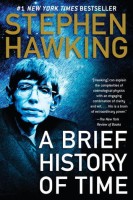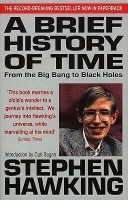 Title: A Brief History of Time: From the Big Bang to Black Holes
Title: A Brief History of Time: From the Big Bang to Black Holes
Author(s): Stephen Hawking
Release year: 1988
Publisher: Bantam Books
Why in Database: The turtle elements, in a way, binds this book together. They appear twice, first at the very beginning in a fomr of a well-known anecdote presenting the “infinite turtle tower“. At the very end the author refers to it again in the summary.
A well-known scientist (some say it was Bertrand Russell) once gave a public lecture on astronomy. He described how the earth orbits around the sun and how the sun, in turn, orbits around the center of a vast collection of stars called our galaxy. At the end of the lecture, a little old lady at the back of the room got up and said: “What you have told us is rubbish. The world is really a flat plate supported on the back of a giant tortoise.” The scientist gave a superior smile before replying, “What is the tortoise standing on.” “You’re very clever, young man, very clever,” said the old lady. “But it’s turtles all the way down!”
Most people would find the picture of our universe as an infinite tower of tortoises rather ridiculous, but why do we think we know better? What do we know about the universe, and how do we know it? Where did the universe come from, and where is it going? Did the universe have a beginning, and if so, what happened before then? What is the nature of time? Will it ever come to an end? Can we go back in time? Recent breakthroughs in physics, made possible in part by fantastic new technologies, suggest answers to some of these longstanding questions. Someday these answers may seem as obvious to us as the earth orbiting the sun – or perhaps as ridiculous as a tower of tortoises. Only time (whatever that may be) will tell.
To try to answer these questions we adopt some “world picture.” Just as an infinite tower of tortoises supporting the fiat earth is such a picture, so is the theory of superstrings. Both are theories of the universe, though the latter is much more mathematical and precise than the former. Both theories lack observational evidence: no one has ever seen a giant tortoise with the earth on its back, but then, no one has seen a superstring either. However, the tortoise theory fails to be a good scientific theory because it predicts that people should be able to fall off the edge of the world. This has not been found to agree with experience, unless that turns out to be the explanation for the people who are supposed to have disappeared in the Bermuda Triangle!


Author: XYuriTT
